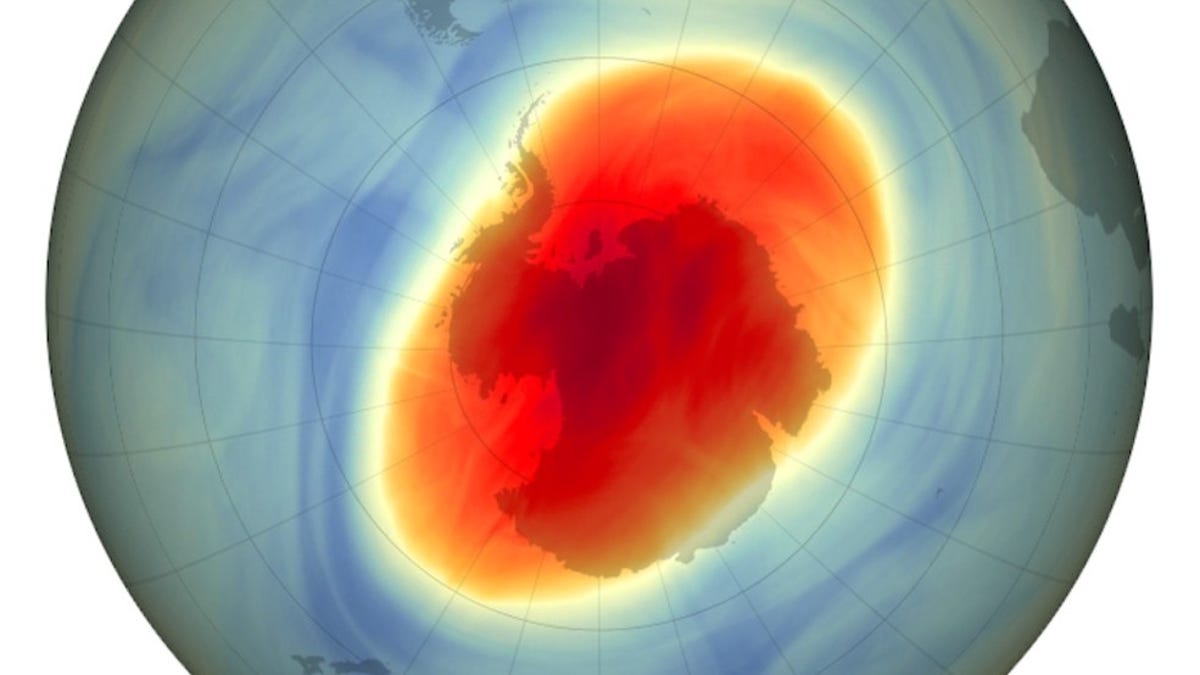Ozone Layer Hole Continues to Shrink in 2022, NASA Says
Scientists project we're still decades away from the ozone layer's recovery.

A NASA graphic shows the extent of the 2022 ozone hole over Antarctica
The ozone layer is crucial to allowing life to thrive on Earth. NASA has likened it to atmospheric sunscreen, a layer that protects us from the sun's ultraviolet radiation. On Wednesday, NASA and the National Oceanic and Atmospheric Administration issued an update on the infamous hole in the ozone layer that forms over Antarctica each year.
The hole has been under observation for decades. This year, it reached an average area of 8.9 million square miles (23.2 million square kilometers) as tracked between Sept. 7 and Oct. 13. "This depleted area of the ozone layer over the South Pole was slightly smaller than last year and generally continued the overall shrinking trend of recent years," NASA said in statement.
The hole is caused by human-made chemicals, including some aerosols. Governments around the world got together in the 1980s and signed on for a treaty called the Montreal Protocol in order to phase out the use of ozone-damaging substances.
The hole varies in size each year. "We see some wavering as weather changes and other factors make the numbers wiggle slightly from day to day and week to week. But overall, we see it decreasing through the past two decades," said Paul Newman, chief scientist for Earth sciences at NASA's Goddard Space Flight Center.
The ozone hole in 2021 raised some eyebrows for being a bit of chonk that reached a size larger than Antarctica by mid-September. It was one of the largest and deepest in recent years, but it didn't derail the long-term trend of a shrinking hole. Newman said the Montreal Protocol is working.
NASA and NOAA work together using data from multiple satellites to track the seasonal hole. This year's hit its maximum on Oct. 5 by reaching 10.2 million square miles (26.4 million square kilometers).
Healing the ozone hole is a decades-long proposition since some of the chemicals that cause the hole can linger for a long time. NASA released a study in 2018 showing the first direct proof that the chemicals ban was aiding in the ozone layer's recovery.
According to NOAA, the ozone hole is projected to close up around 2070. "It's great to see this progress," said NOAA senior scientist Stephen Montzka in a statement earlier this year. "At the same time, it's a bit humbling to realize that science is still a long way from being able to claim that the issue of ozone depletion is behind us."

